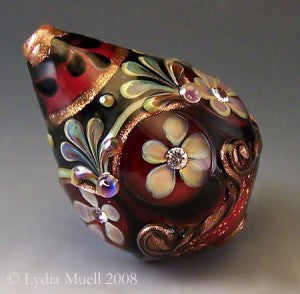The History of Glassmaking in America: Lampwork Beads
The lampwork technique consists of transforming molten glass into various artworks, including beads that are very popular in handmade jewelry. Lampwork was first done by the use of alcohol lamps in which the flame would be increased in temperature using bellows. This craft has been widely practiced since the 14th century in Murano, Italy, but it wasn't brought to the United States until much more recently.

Lampworking was brought to the United States a few decades ago when artists who visited Italy became interested in the Murano glass beads they discovered. These artists each returned to America and started experimenting on their own with glass to create beads. The torches they used were modified, as there were pretty much no lampwork tools available to them, and they chose American stain glass from development during the turn of the century to use. They developed their own lampwork bead-making techniques as they experimented.
The techniques grew as these artists shared their knowledge with each other, then spread this information to anyone who showed interest. Now, lampworking techniques have spread greatly throughout the United States with lampwork being taught in classes at art studios and even colleges throughout the nation.

Lampwork torching is quite difficult to master, however, as you first must have an understanding of glass chemistry. The colors of glass are created by mixing different chemicals, and it takes years of experience to fully understand just how glass interacts chemically when held to a flame. The knowledge needed to master lampwork bead making is part of what makes this craft so intriguing.
Here are some of Stephanie White's (SWCreations) first lampwork beads:

Here is a more recent lampwork focal bead from Stephanie White:

Here is a gorgeous rose filled heart lampwork bead by artist Patsy Evins:

Here is a “House of Vettii” lampwork bead by artist Lydia Muell (Lampwork Treasures):

Other Articles

